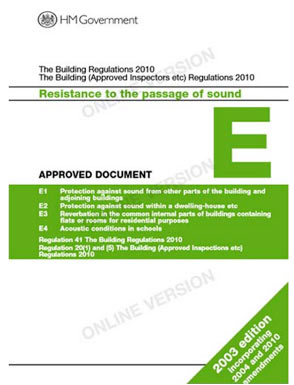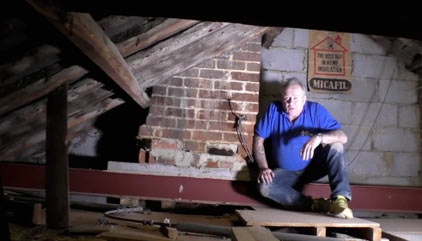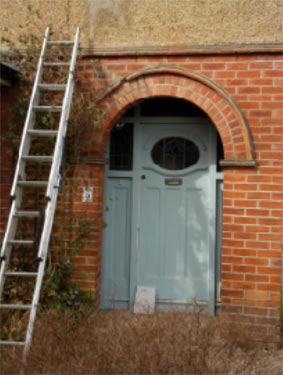Who Gives Permission for Developments?
When a planned or proposed development is likely to directly affect the area intended for the development, permission must generally be sought from the Planning Department of your local council.
Government has given the decisions about what needs planning permission, and how it is (or is not) awarded, to the local authorities.
If you are unsure of the district you come under or who your local authority planning department is, we have put together a list of all planning authorities in the UK, Wales and Scotland to help you. This list, in PDF format, can be downloaded here.
You can find out more about the Planning Permission requirements in our project on planning permission that can be found here.

Stone tiled roof with built in dormer window
If your planned development is unlikely to affect the area in which it stands it may well be permitted under the Permitted Development Rights.
These rights have been set by Government itself and are a fairly generic set of rules allowing the public to carry out projects, without the time consuming restraints of planning permission, providing they do not disturb, upset, spoil or compromise anything around them.
Sometimes it is a borderline decision as to whether there will be some sort of affect on others if a particular development takes place. In situations like this there may be conditions attached to your permitted development project and the onus is on you to check. We will look more into these conditions later on the page.

Local government rules on article 4 and permitted development
The overall legislation for both planning permission and permitted development rests with the government and you can click here for a PDF on the National Policy Guidance or you can also click here for a PDF of on how exactly this Permitted Development legislation is drawn up (see legislation heading at base of page) and the logic (or otherwise!) behind the decisions the government has handed down to local authorities.
Building Regulations
Regardless of whether you need planning permission or your project comes under permitted development rights, you must always comply with the current Building Regulations.

Booklets are produced for each building regulation
What Conditions Could Affect a Project That Would be Allowed Under Permitted Development Rights Normally?
In some areas of the country, permitted development rights are harder to get. These areas are usually areas of outstanding beauty and/or conservation areas.
There may also be conditions attached to your permitted development rights if you live in a listed building.
You should also note that permitted development rights ordinarily applied to domestic homes, do not apply to flats, maisonettes or other buildings and also, a completely different set of permitted rights rules apply to commercial properties.
Article 4 Direction
When all or some of your permitted development rights are removed by your planning office it is usually a result of a directive called Article 4.
This states that “when the character of an area of acknowledged importance would be threatened” automatic developmental rights permission may be refused. This is generally, although not exclusively, applied to conservation areas.
What can I do to my Home Under Permitted Development Rights?
Conservatory and Permitted Development
Adding a single storey conservatory under permitted development rules is OK. There are however conditions attached. If any of these conditions are apparent before or during the project, permitted development does not apply.
For a full list of these conditions please download the guide to erecting conservatories under permitted development. We have also listed some of the common conditions here:
- On any conservation area, areas of natural beauty or world heritage sites (all known as “designated land” the conservatory cannot be clad with render, plastic, tiles, stone, artificial stone or pebbledash
- If your conservatory is on designated land (see above) it must not extend beyond the side wall of your house
- The conservatory must not exceed 50% of the total area of land surrounding the original house when the footprint is added to any existing sheds, outhouses and extensions which have been added since the house was built
- The width of your conservatory must not exceed half the total width of the original house as it was first built
- Your (single storey) conservatory must not be greater than 4m high
Please note, there are more conditions that apply and to understand what these are and how they could effect your plans, see the above link for the guide to permitted development conditions for a single storey conservatory

Permitted development can apply to conservatories
Single Storey Extension and Permitted Development
Single storey extensions are allowed under permitted development, providing certain conditions are met. For a full list of the conditions attached to building a single storey extension under permitted development rights, please see here.
The following list contains some of the most common conditions but please be aware that the responsibility of understanding the conditions properly rests with you.
Also note that permitted development rights for single storey extensions only apply to houses, not flats or maisonettes.
Permitted development will notapply if:
- The extension is to the front or side of the principle building where it fronts a highway
- Materials used are not similar to those used in the existing building
- A side extensions width must not exceed 50% of the width of the existing building
- Single storey rear extension must not exceed a height of 4m
- The maximum height of the extension must not exceed that of the original house
- Single storey extensions on the side of a building on designated land (see above for definition of designated land)

Extensions must conform to permitted development guidelines
Two storey Extensions and Permitted Development
Two storey extensions can be built under permitted development except when detailed conditions are encountered.
Here follows a brief list summary of conditions under which permitted development will not apply, but for a full list of the conditions attached to building a two storey extension under permitted development rights please see the Planning Portal guidance here.
- As with conservatories and single storey extensions, the new building must not exceed 50% of the original land area of the property (when first built) when all other extensions, outhouses and shed are taken into consideration
- Extension must not exceed the height of the existing building but other rules apply here when considering boundaries. Please guide linked to above for more info
- Roof pitch does not match, or be close to matching, that of the existing building
- Balconies or verandas are included in the two storey extension

Extension roof pitch must match existing under permitted development
Loft Conversions and Permitted Development
Loft conversions are considered to be permitted development providing the list of conditions under which permitted development does not apply do not apply to your project.
The list below shows some of these conditions but for a full list of the conditions attached to adding a loft conversion extension under permitted development rights, see the full Planning Portal document here.
- While you may not have done any conversion work in your loft a previous owner might have. This must be taken into account when meeting the condition that the total loft conversion space must not exceed 40 cubic meters for a terraced house and 50 cubic meters for a detached and/or semi detached house
- If your loft conversion extends through, over or beyond the face of the existing roof slope of the side or face of the roof that fronts a highway, permitted development does not apply
- The conversion overhangs the outer face of the existing wall
- Bats will be affected if you carry out the work. Please see our project on planning permission to download all of the details about bat protection in your property
Again, these are the most popular questions we receive regarding loft conversions and permitted development. Please download the full guide to avoid expensive mistakes and remember that permitted development, in this case, is only applied to houses, not flats or maisonettes.

Removing the chimney stack for a loft conversion
Outbuildings (Including Sheds, Workshops, Garden Stores, Swimming Pools, Saunas, Ponds, Hot Tubs and Tennis Courts)
Permitted development applies to outbuildings as listed in the title as well as enclosures for fuel tanks and any other building designed to increase the enjoyment of living in the house.
This includes hives, hutches and other areas for the keeping of pet animals, birds (aviaries and pigeon lofts), poultry, bees and other livestock.
The following list is a few of the common conditions under which permitted development may not apply. For a full list of the exclusions to permitted development of outhouses and other outbuildings, please download the guide to outhouses and permitted development from the Planning Portal website.
- Outbuilding are not permitted in the grounds of a listed development
- Outbuilding must not be built in front of the main elevation of the property
- As with extensions, outbuilding must not exceed 50% of the area of the original property grounds. The same exceptions apply as can be seen above
- Outbuildings must be single storey although heights can vary. Please see the download guide for full conditions
- Decking and platforms must meet full conditions which can be found in our guide
- Only houses are affected by these conditions. They do not apply to flats and maisonettes.

Outbuildings can be built under permitted development
Porches and Permitted Development
Adding a porch to your home is permitted under permitted development except where the following conditions below apply.
This is a brief summary of the conditions and if you wish to build a porch we suggest you download the full guide to porches and permitted development from teh Planning Portal website.
The following list contains a few of the most common conditions under which permitted development does not apply.
- The ground area of the porch exceeds 3 square metres
- The highest part of the porch exceeds 3 metres
- The porch is within 2 metres of any boundary that fronts a used road

Porches can be built under permitted development
Please note any, or all, of the above conditions may have been revoked in certain areas by the implication of article 4 (see above) and you should be well aware of your responsibilities as far as knowing the rules as listed on the planning portal website.
None of the information in this article could be defined as a definitive source of legal information and it mearly meant as a guide to what you need to know.
As the regulations and rules themselves are subject to regular changes, please only ever reference the most up-to-date documentation on the Planning Portal website, respective to the plans that you have.

